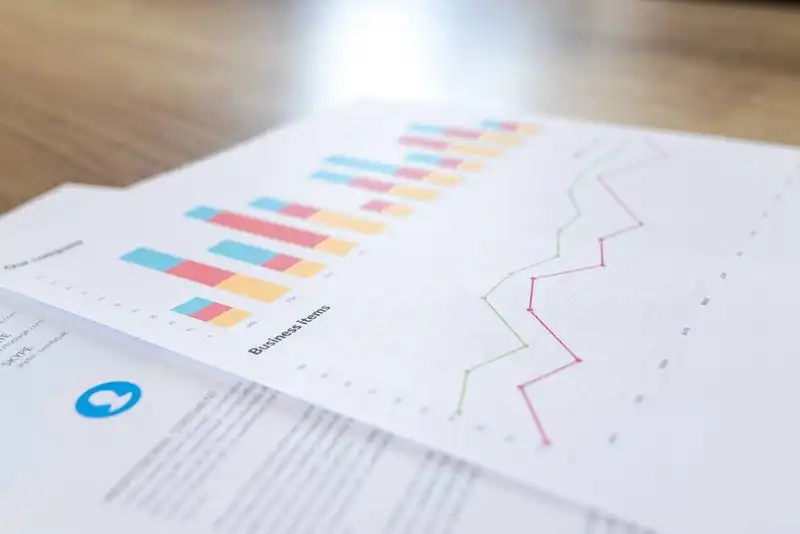Data collection
Complete Guide to Data Collection for Businesses
October 12, 2020

Big data is arguably the biggest business buzzword of the past decade. Research by Deloitte notes that 49% of their respondents said data analytics, or the systematic analysis of data, allows them to make better decisions. Similarly, other studies have reported that around 80% of companies that experience positive growth collect data compared to just 58% of non-growth companies.
In other words, data insights allow business leaders to make better-informed decisions to create financial scalability. However, to take advantage of data, businesses must first establish a system for efficient data collection.
What Is Data Collection?

Data collection is the strategic and systematic gathering, measurement, and analysis of business information from a variety of sources from both within and outside of the enterprise. Data allows businesses to gain detailed visibility and understanding regarding an area of interest in the organization - this could involve anything from customer behavior to operational efficiency.
Data gathering allows researchers to evaluate a hypothesis about a business process, answer relevant questions about a problem or challenge, or predict outcomes of future trends and probabilities.
For example, an advertising agency can test a prospective advertisement's effectiveness by running focus groups with people that belong to the clients' target market. A retail company, on the other hand, can gather data through customer touchpoints, such as in-store visits, website traffic, phone inquiries, and social media posts.
More broadly, data collection is one of the most crucial steps of any research project, regardless of the field or industry. Without it, the researcher cannot make a conclusion that can be tested and verified.
Primary vs. Secondary Data

When conducting research, businesses typically encounter two types of data - primary data and secondary data.
Primary Data
This refers to data that is collected directly from a primary source. Primary data collection typically involves unique and proprietary information that is specific to the company's needs.
Examples of primary data sources include-
- Interviews - An interviewer or researcher asks a subject or respondent a set of questions about the topics of interest. The interview can be conducted over the phone or in-person, depending on the researcher's preference.
- Focus Groups - Focus group discussions involve two or more people that share common characteristics, such as demographics or consumer preferences. This is a common market research tool to facilitate open-ended conversations among participants.
- Surveys - This method is similar to an interview but uses a standardized set of questions to gather information from a predetermined group of respondents. Questions are either written on paper or entered into an online survey for participants to answer.
- Observations - This method is typically used in behavioral science to monitor and record the actions of participants under controlled environments.
Secondary Data
Secondary data covers information that has been previously collected by another party and made available for others to use. Secondary data is easier to collect since its sources, such as reports and case studies, are readily available. However, secondary data requires more analysis because it is not tailored to the organization's unique situation.
Examples of secondary data sources include-
- Books - Books can cover just about any topic anyone can think of. However, it is important to choose trustworthy books when using them for a literature review.
- Journals - Journals provide a wealth of updated studies, giving researchers access to up to date information.
- Published Sources - These include case studies and reports from reputable publishers and writers.
- Newspapers - Newspapers are a valuable source of factual reporting about current events and politics.
Government Records - The government routinely collects critical information such as census data, health records, education records, and economic data.
Quantitative Data and its Collection Methods

Quantitative data measures and represents behaviors, actions, and other variables in the form of numerical data. This is an ideal method for describing patterns that can be quantified or expressed through numbers, such as size, length, amount, price, duration, and likelihood.
By collecting quantitative data, researchers can also make statistical generalizations, such as, 25% of men above the age of 50 ordered this product, or, The months of November and December see demand rise by up to 38%.
At its simplest, quantitative data is how researchers typically answer the basic questions of what, where, when, which, and who. However, a company's approach to quantitative data collection ultimately depends on the nature of its research, which can be one of the following-
- Descriptive Research
This allows them to quantify the behaviors they observe and express them in counts or percentages. When it's time to analyze the data, the researchers can visualize the results using charts, graphs, or tables.
- Correlational Research
- If the data shows two variables increasing or decreasing at the same time, this means they have a positive correlation.
- If one variable increases and the other decreases, this is a negative correlation.
- There is zero correlation, this means that there is no relationship whatsoever between two variables.
For example, by conducting surveys with customers, a business can discover a positive correlation between faster shipping times and higher customer satisfaction.
- Experimental Research
For example, a retail company can test the usability of its new e-commerce app by randomly assigning two groups of older participants to the current and new versions of the app. The researcher then conducts interviews to measure attitudes and behaviors.
However, it should be noted that depending on numbers and figures to make conclusions without proper context can lead to misleading numerical data. This is where qualitative data comes in.
Qualitative Data and its Collection Methods

Qualitative data, also known as categorical data, is information that is expressed as groups and categories instead of numbers. Qualitative data, in turn, is divided into two categories-
- Nominal Data - This is characterized by grouping variables into names or categories like gender, race, age brackets, and location among other things. While the nominal scale can use numbers in place of group names, they are only group identifiers. For example, in a nominal scale of hair color, 1 can be for Black, 2 for Brown, 3 for Auburn, and 4 for Others.
- Ordinal Data - This is characterized by placing variables into ordered groups. For example, customers can be grouped according to their level of satisfaction - satisfied, neutral, and dissatisfied.
Whereas quantitative data collection methods count responses and record numeric data, qualitative data collection seeks to generate in-depth, quality insights on the thoughts and feelings of research participants. In other words, qualitative data usually answers the questions how and why.
Qualitative data collection methods can be classified into three primary categories-
- Ethnography
Applicable data collection techniques for this method include-
- Surveys
- Interviews
- Focus groups
- Observations
- Grounded Theory
Examples of data collection methods using grounded theory techniques include-
- Subjective immersion and fieldwork (e.g., observing the habits of supermarket customers)
- Document collection and analysis. Newspaper articles can shed light on the opinions and sentiments of a community, for example.
- Interviews
- Phenomenology
For example, a researcher can observe how people interact with a product to understand what they like about it and what they don't.
How to Conduct Data Collection

While the goals and methods of data collection can vary between companies and industries, the overall process usually follows these steps.
1. Set a Research Goal
Every research project needs a goal or a purpose that provides direction. One way to get started is by writing a problem statement. This is usually one or two sentences describing the problem and the desired outcome.
Next, prepare at least two questions that define what needs to be researched. This will make it easier to decide whether to collect qualitative data or quantitative data or perhaps a bit of both.
For example, suppose the business has a problem with high absenteeism due to low morale. The goal could be to understand the feelings and perceptions of employees to help them stay motivated. The research questions could then be-
- What is causing low employee morale?
- What can be done to improve their morale and motivation to work?
2. Choose the Method/s for Gathering Data
Choose a data collection method based on the project's goal, problem statement, and research questions. Based on the earlier example, the firm can try any of the following-
- Holding interviews to get employees to talk about their feelings in a private space
- Focus group discussions to get employees to share their thoughts in a natural group environment
- Surveys that allow employees to express themselves anonymously
3. Plan the Research Procedures
Now it's time to get into the specifics of the data collection process. For example, if the company decides to hold interviews and focus group discussions, the researcher will need to decide what kind of questions to ask.
There are a few things to consider at this stage-
- Operationalization - This is the process of defining the steps to measure abstract concepts that cannot be directly observed. For example, when asking employees to rate their satisfaction levels about management practices, the researcher can use a Likert scale.
- Standard Collection Procedures - Standardizing data collection ensures the accuracy and reliability of all collected information. This step is especially important when there are multiple researchers involved, as everyone needs to follow the same guidelines to gather data consistently.
- Data Management - Before commencing data collection, it is important to have a system for organizing and storing the information. For example, when holding face-to-face interviews, there needs to be a system for recording and transcribing sessions to preserve the integrity of data.
4. Begin Gathering Data
Finally, it's time to collect the data. Best practices to follow at this stage include-
- Take note of all pertinent information when collecting the final information. For example, record the conditions of the research environment when conducting fieldwork.
- Double-check manually-recorded data.
- When conducting statistical analysis, consider seeking the help of expert statisticians or software solutions for accurate results

When it comes to data collection, it is beneficial to stay alert and pay attention to the details. By taking a methodical approach to gathering data and planning each step of the process, businesses can ensure their research project yields valuable actionable insights.

The Rise of Fast Food Automation and What It Means for the Industry
2023-02-23
Read More

The Best Digital Wallet Apps in 2022 That Will Save You Money
